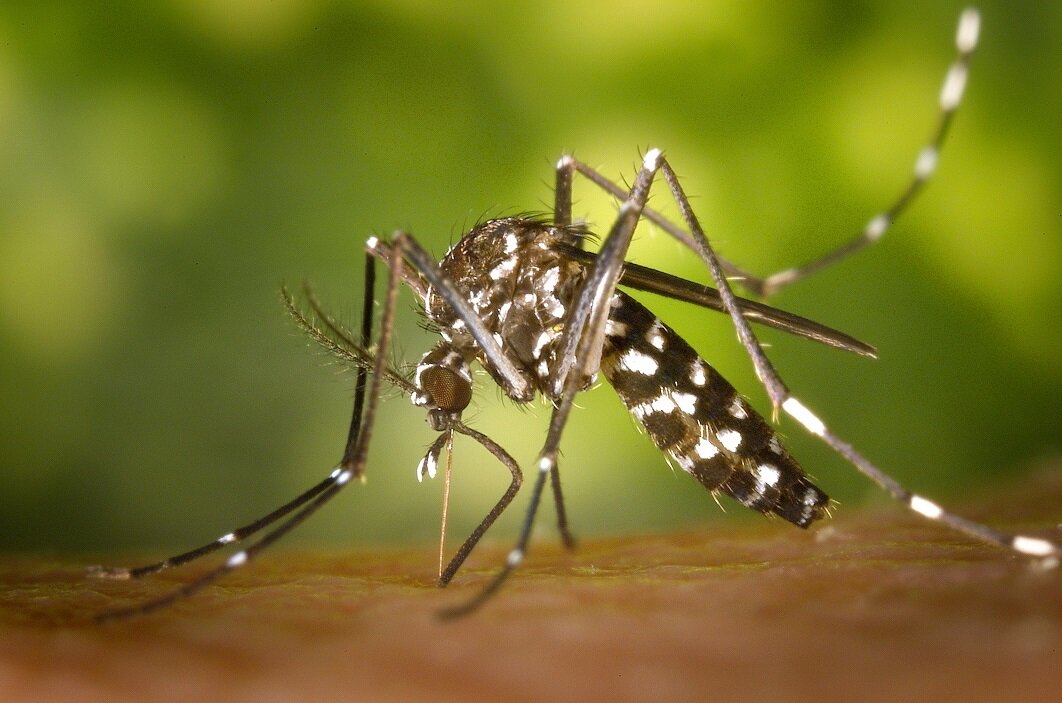A group of scientists has developed mosquito-resistant, insecticide-free clothing designed to save lives.
Researchers at the North Caroline State University created mosquito-resistant to combat the virus-carrying mosquito known as 'Aedes aegypti' or the 'yellow fever mosquito.' Aedes aegypti is known to carry viruses responsible for diseases like Yellow fever, Zika, and Dengue.
Not only are they annoying to deal with, mosquitoes can also spread viruses - Image Credit: 7th Son Studio via Shutterstock
The materials used were developed using a computational model of their own design, which defines the biting behavior of Aedes aegypti. In order to test the unique clothing, a brave volunteer got into a cage with 200 live (disease-free) mosquitoes. It sounds horrifying, but the scientific experiment turned out very well. After some time, the test subject came out of the cage unscathed; not a single mosquito had managed to drain blood.
The researchers think their computational model could be applied more broadly to produce clothing to decrease the transmission of all kinds of diseases.
The development
To build a functional computer model, the scientists looked at the dimensions of the head, antenna, and mouth of A. aegypti in addition to the mechanics of how it bites.
The researchers then developed a model that described the mosquito's bite very accurately. With that model, they then examined what exactly a fabric impermeable to these mosquitoes should look like. The model showed how thick the fabric and how large the pores in the fabric should be, and how the threads in the fabric should be designed to prevent a mosquito from biting through it.
Different fabrics
Ultimately, the researchers developed three substances based on the models.
One very thin fabric (less than a millimeter thick) with very small pores, which prevented the mosquito from getting through entirely.
A fabric with medium-sized pores, which prevented the mosquito from burying its head deep enough in the fabric for its mouth parts to reach the skin.
And a third material with large pores but was sufficiently thick that the mosquito's mouth still couldn't reach the skin.
Image Credit: CSNPhotography via Shutterstock
One would assume that the ideal material is one without pores at all, but such material wouldn't allow the skin to breathe, which is highly uncomfortable. So the researchers had to find the balance between comfort and functionality.
In the following test, the scientists chose a series of woven and knitted fabrics that met the bite-proof parameters determined by the computational model and confirmed they functioned in tests using both the blood reservoir and human volunteers.
The researchers looked at the number of bites received by volunteers when inserted an arm covered by a protective sleeve into a mosquito cage. In addition, the team analyzed the fabrics' ability to prevent bites and repel mosquitoes to fabrics treated with insecticide.
The final product
From what they learned in early tests, a bite-resistant, form-fitting undergarment made from a thin material was developed in addition to a long-sleeved shirt, which was originally thought of as a combat shirt for the military.
Initial tests with the volunteer in a cage filled with 200 mosquitoes ended with 7 bites on the shoulders and back. After improving the design (doubling the material layer around the shoulders), the team could eventually prevent 100% of bites.
"The final garments that were produced were 100 percent bite-resistant," said Michael Roe, William Neal Reynolds Distinguished Professor of Entomology at NC State. "Everyday clothing you wear in the summer is not bite-resistant to mosquitoes. Our work has shown that it doesn't have to be that way. Clothes that you wear every day can be made bite-resistant. Ultimately, the idea is to have a model that will cover all possible garments that person would ever want - both for the military as well as for private use."
The team published their findings in a paper in the journal Insects, listed below. If you which to know more about the details of the study, be sure to check it out.
Sources and further reading:
If you enjoy our selection of content, consider subscribing to our newsletter (Universal-Sci Weekly)
FEATURED ARTICLES:











